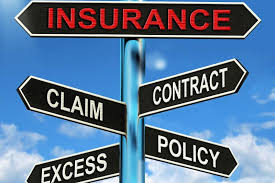The claims process for commercial insurance lines can vary depending on the type of coverage and specific policy terms. However, there are fundamental steps involved in handling claims for commercial insurance. Here is an overview of the claims process for commercial insurance lines:
- Report the Claim: As soon as an incident occurs that may lead to a claim, notify your insurance company or agent. Provide them with accurate and detailed information about the incident, including the date, time, location, and a description of what happened. Prompt reporting is crucial to comply with any policy requirements and initiate the claims process.
- Review Policy Coverage: Review your commercial insurance policy to understand the coverage, exclusions, deductibles, and limits that apply to your claim. Familiarize yourself with the specific requirements and processes outlined in your policy for filing a claim.
- Gather Documentation: Collect all relevant documentation and evidence related to the claim. This may include incident reports, photographs, witness statements, financial records, contracts, and any other supporting documents. Proper documentation is essential to support your claim and facilitate the claims process.
- Notify Relevant Parties: If necessary, notify other relevant parties, such as the responsible parties involved in the incident or law enforcement authorities. Cooperation with all parties involved is important during the claims process.
- Assist in Investigation: The insurance company may conduct an investigation to assess the circumstances of the incident and determine the coverage and liability. Cooperate fully with the investigation, providing any requested information or documentation, and responding to inquiries from the insurance company or claims adjuster.
- Claims Evaluation: The insurance company will evaluate the claim based on the terms and conditions of your policy. They will consider factors such as the cause of loss, the extent of damage or loss, any applicable deductibles or limits, and the policy provisions that apply to your specific coverage.
- Claims Adjuster Assessment: A claims adjuster may be assigned to evaluate and assess the claim. The adjuster will review the claim documentation, investigate the incident, and determine the extent of the covered loss. They may schedule site visits or inspections, interview relevant parties, and review financial records or other pertinent information.
- Settlement Negotiation: Once the claim is evaluated, the insurance company will make a settlement offer based on their assessment of the covered loss. The negotiation process may involve discussions between you, the insurance company, and the claims adjuster to reach a mutually agreeable settlement amount.
- Claim Settlement: If a settlement agreement is reached, the insurance company will process the payment according to the terms of the settlement. The settlement may include compensation for the covered loss, reimbursement for expenses, or other applicable provisions as outlined in your policy.
- Claim Closure and Documentation: After the settlement is finalized, ensure that you receive the agreed-upon compensation promptly. Keep copies of all relevant documents, including the settlement agreement and any correspondence with the insurance company, for your records. Proper documentation is crucial for record-keeping, financial reporting, and potential future audits.
It is important to review your commercial insurance policy and understand the specific coverage and claims procedures for your business. If you encounter difficulties or have concerns during the claims handling process, consider seeking assistance from an insurance professional or legal advisor specialized in commercial insurance to ensure your rights are protected and the claims process is handled effectively.
SHARE
